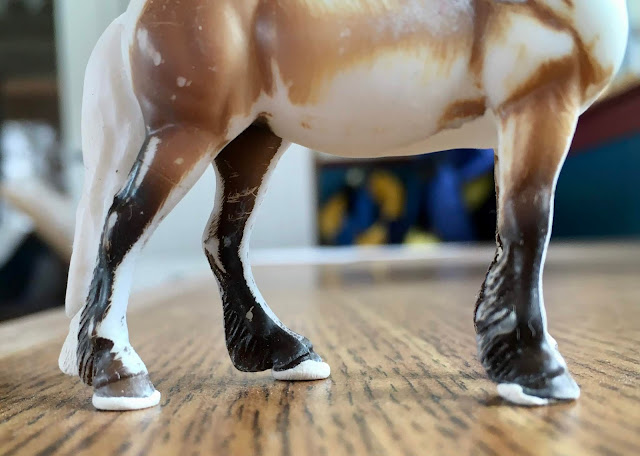Ahh, models
whose hooves are supposed to be flat on the table... I talked about how I like my models to stand well in a previous post--using a table-height view and sandpaper. But then I looked closer at a few works in progress and found a model or two where I used different techniques.
The first model that came up was the Breyer standing pony. She has four tiny hooves that try to touch the table, but depending on the model, they don't always succeed. Part of this is physics. A three-legged stool will be stable, whereas a four-legged one will wobble. Another issue the pony has is that her toes can be a little rounded over.
 |
| Breyer Stablemate Highland Pony Hooves |
So I added a small ball of epoxy to each foot. Then I placed her on a flat surface. I use old gift cards, but a scrap of paper or saran-wrap on a desk works well too. (Just don't stick the model to the furniture!)
 |
| Epoxy balls squish out around feet. |
When the epoxy is cured, it'll need to be shaped. Dremel tools, emery boards, and sanding sticks all work great.
 |
| Here is a pony custom that is standing a little bit better. |
Another model on my desk that didn't stand square was the Gypsy Vanner mold. This particular model actually looked better with both front feet off the table. So I added a clear acrylic rod.
 |
| This model's legs were not moved. Only the acrylic rod was added. With a little more work, I think he'll stand well. |
 |
| Pin in hoof of Breyer Stablemate foal. |
Both the rod and pin are inserted into a hole drilled into the hoof. They are super-glued in place. I leave them a little long at first, and shorten as I work. Looking at the photos, I think I might go a hair shorter on both so my models stand better.

Comments
Post a Comment